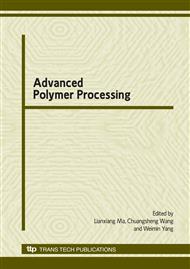p.31
p.36
p.41
p.47
p.52
p.58
p.64
p.69
p.74
Research on High-Powered Brazing Diamond Saw for Cutting Vehicle Tyre
Abstract:
The high-powered brazing diamond saw was developed to cut vehicle tyre efficiently. The Ti-coated diamond and the uncoated diamond were brazed with NiCr alloy by high-frequency induction under argon atmosphere at 1020°C within 10 seconds. The interfacial microstructures between brazed diamond and the filler alloy were analyzed by scanning electron microscopy (SEM), X-ray diffraction (XRD) and energy dispersion spectrometer (EDS). It is surprisedly found that Cr-carbides forms compactly and normally on the surface of Ti-coated diamond brazed, whereas Cr-carbide forms loosely and tangentially on the surface of uncoated diamond brazed. The abrade experiment results for the brazed diamonds show that the bond strength between the Cr-carbide and uncoated diamond brazed is lower than the normally formed Cr-carbide and the diamond. Furthermore, the cause that Ti changes the morphology of Cr-carbides on the surface of Ti-coated diamond brazed is discussed by the further tests that are specially designed.
Info:
Periodical:
Pages:
52-57
Citation:
Online since:
December 2009
Authors:
Price:
Сopyright:
© 2010 Trans Tech Publications Ltd. All Rights Reserved
Share:
Citation:


